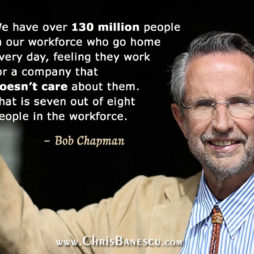Fast Company | by Jeff Chu | September 2008
No one is attacking Washington, D.C.’s stagnant culture more boldly than Michelle Rhee, head of the city’s failing schools. Is there a lesson here for our nation’s leaders?
Paul Laurence Dunbar Senior High School in Washington, D.C., is one of the worst schools in one of the worst school districts in America. “The mentality of excellence? We wish we could have that,” said principal Harriett Kargbo, as we toured the school one morning in May. “But this,” she said, pointing at the metal detector guarding the entrance, “is the reality.
This, too: Dozens of kids wandering the halls during second period. Corridors littered with fliers, candy wrappers, potato-chip bags. One second-floor foyer reeking of marijuana. (“I smell pot smoke,” I said. “Really? I don’t,” Kargbo replied.) In the five-year history of No Child Left Behind, the school has never met the law’s benchmarks; in 2007, just 24% of its sophomores tested “proficient” in reading and only 20% made the grade in math.
As we walked from one teaching area to another — Dunbar is one of D.C.’s last open-plan schools, with dividers and old filing cabinets separating the “class- rooms” — it became clear why the students weren’t learning. Of the dozen classes we visited, only in one history session were all of the students doing something approximating work. “Why isn’t anyone teaching?” I asked Kargbo as I watched one student do a meticulous inventory of the contents of her wallet. “It’s the end of the period,” she said. Half an hour later, second period ended.
That afternoon, Kargbo was fired.
The woman who orchestrated the “contract nonrenewals” of Harriett Kargbo and 30 other principals that day was Michelle Rhee, the 38-year-old chancellor of D.C. Public Schools (DCPS). When she was appointed by Mayor Adrian Fenty just over a year ago, Rhee had never led a school, let alone a school system with 10,000 employees and a budget of nearly $1 billion. Since then, she has shuttered 23 schools, canned 15% of the central-office staff, fired 250 teachers who failed to get NCLB-required certification, and bought out more than 200 others. As the new school year gets under way, she is pushing a revolutionary contract that may simultaneously kill the entrenched seniority hiring system and make Washington’s teachers the highest paid in America.
Rhee seems an unlikely crusader. She’s a Korean-American doctor’s daughter who went to an elite private academy in the burbs of Toledo, Ohio, yet she now has in her care a student population that is 83% black, with 80% poor enough to qualify for free lunch. Everything she does provokes shrieks of protest — from teachers, parents, and local politicians. But if she has any doubt about the tumultuous course she’s taking, she doesn’t show it. A few weeks after Kargbo was fired — on the kind of warm spring day when the hands of classroom clocks seem barely to move — I accompany the chancellor to Scott Montgomery Elementary (100% black, 95% free-lunch eligible). She’s there to read Miss Nelson Is Missing to third graders; it’s a classic about kids who don’t know how great their teacher is until she’s replaced by the witchy substitute Viola Swamp. To get her audience into listening mode, Rhee tells one of her favorite stories, about the ornery third-grade class she taught at an inner-city school in Baltimore in the early 1990s. One day, a bee buzzed into the classroom, and her kids freaked out. “I killed the bee,” Rhee says to the kids. (“Whoa!”) “Then I popped it into my mouth and I ate it.” (“Eeewww!!”) “From that day on, they were a little better because they thought I was just a little bit crazy.” (“Ohhhh!!!”)
[…]
“We have a system that does wrong by poor kids of color,” says Rhee, who first encountered what she calls the “stark reality” of urban public education during her senior year of high school, when she volunteered as a teacher’s aide in an all-black, inner-city fourth-grade classroom in Toledo. “If we’re going to live up to our promise as a country — supposedly the greatest country — that has got to stop.”
She knows that this is, to borrow a word from her lexicon, a “ginormous” challenge. According to Margaret Raymond, director of Stanford’s Center for Research on Education Outcomes, “D.C. is the Superfund site” of public schooling. Tim Quinn, managing director of the nonprofit Broad Superintendents Academy, calls it “the most challenging turnaround in America. This is a business involving our most emotionally loaded, important asset: our children. Imagine trying to fix Enron — but worse.”
[…]
It takes faith to believe that Rhee will be able to resurrect the D.C. schools. This is a system where, in a high-school world-history class, the students may get a worksheet that asks just two questions: “What is your favorite place to shop?” and “Why do you like to shop there?” Education Week, in its annual grading of the 50 states and D.C., ranked the district last, giving it D-plus overall and F for K — 12 student achievement and college readiness. In the 2007 National Assessment of Educational Progress, D.C. also tested behind all 50 states, with only 8% of eighth graders proficient in math and 12% in reading. Just 43% of Washington students graduate from high school within five years, according to a 2006 study commissioned by city officials (the national average is 68%).
Yet D.C. spends nearly $17,000 per pupil per year, more than any other urban district except Boston. “It’s not for lack of resources that our schools have failed,” says council member David Catania. “We need a product commensurate to our investment. We ought to be producing fully rounded young people ready for the country’s top universities. We’re not.”
This is not news. Public education has been dismal in D.C. for decades. Thirty years ago, the average high-school freshman here tested at the level typical of a sixth grader elsewhere in the United States, with a significant achievement gap between students in higher- and lower-income areas. Each of the seven superintendents that D.C. has had in the past dozen years talked about shrinking that gap and fixing the system. None did it.
. . . more



